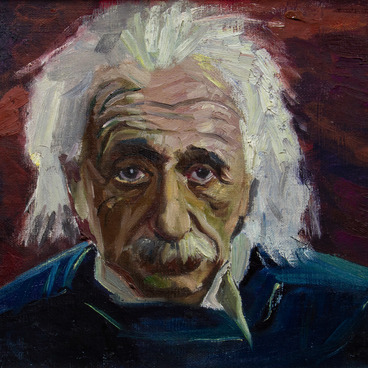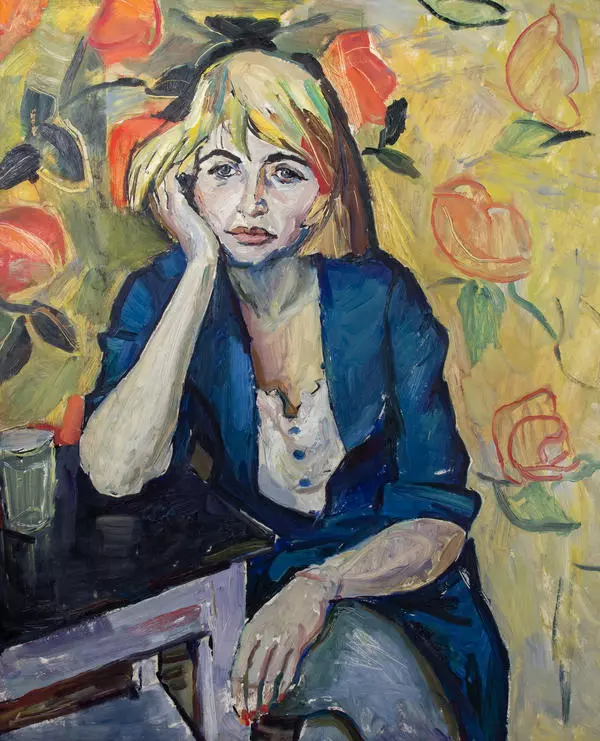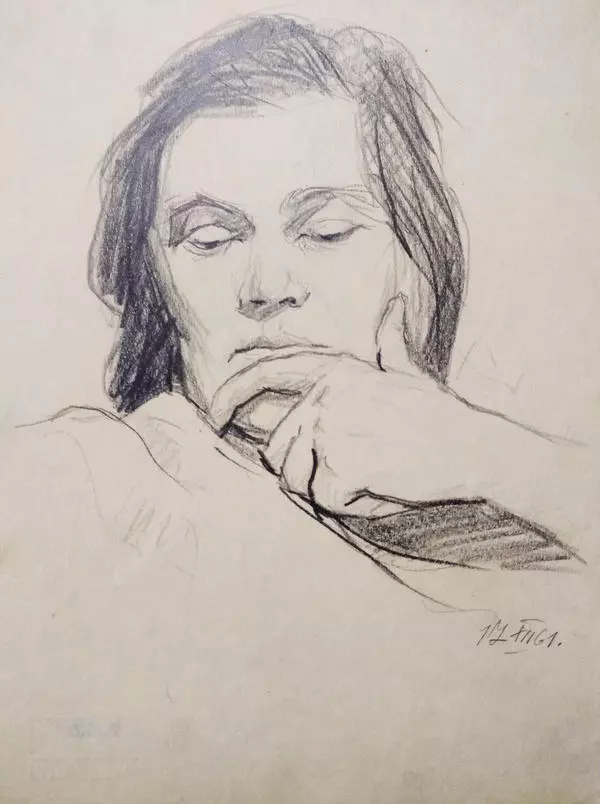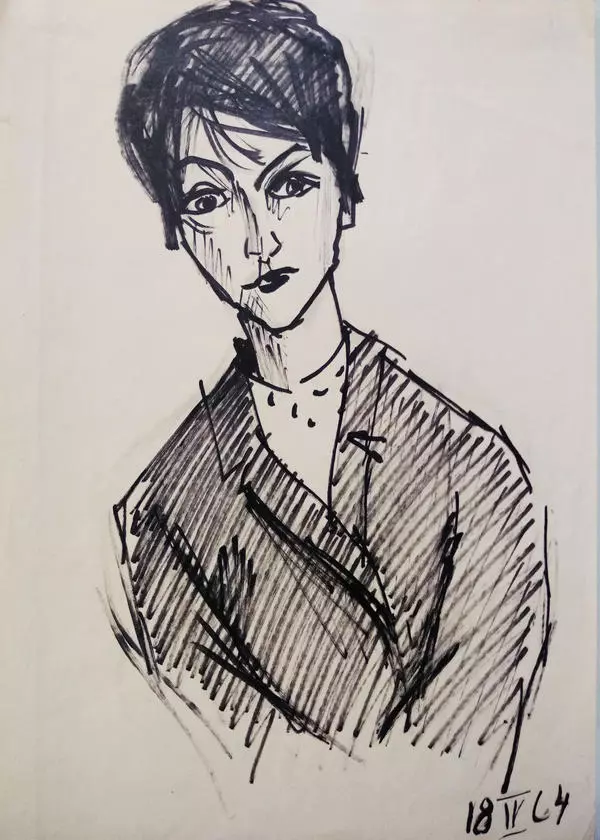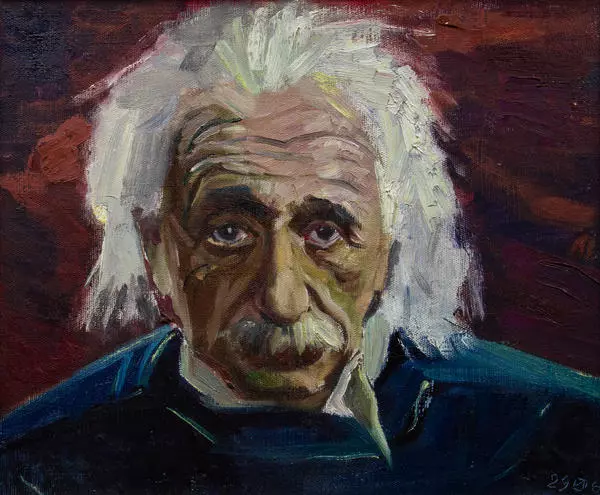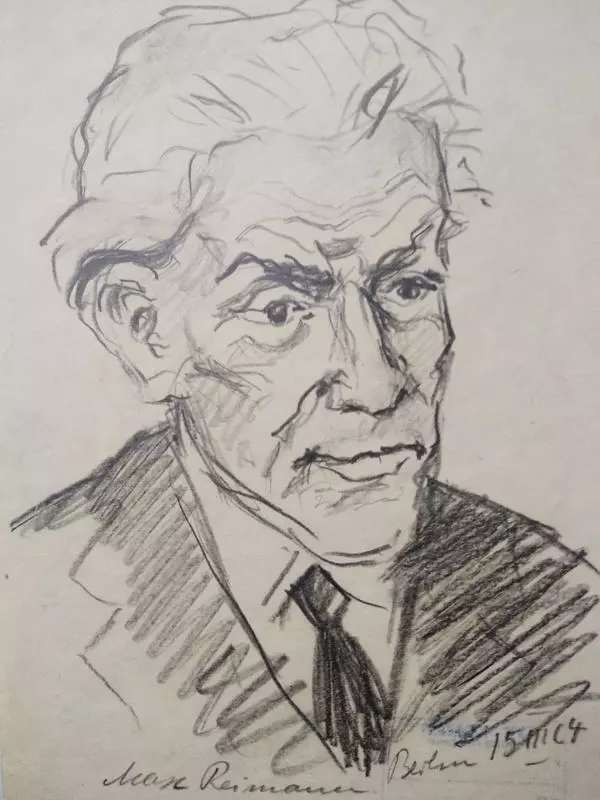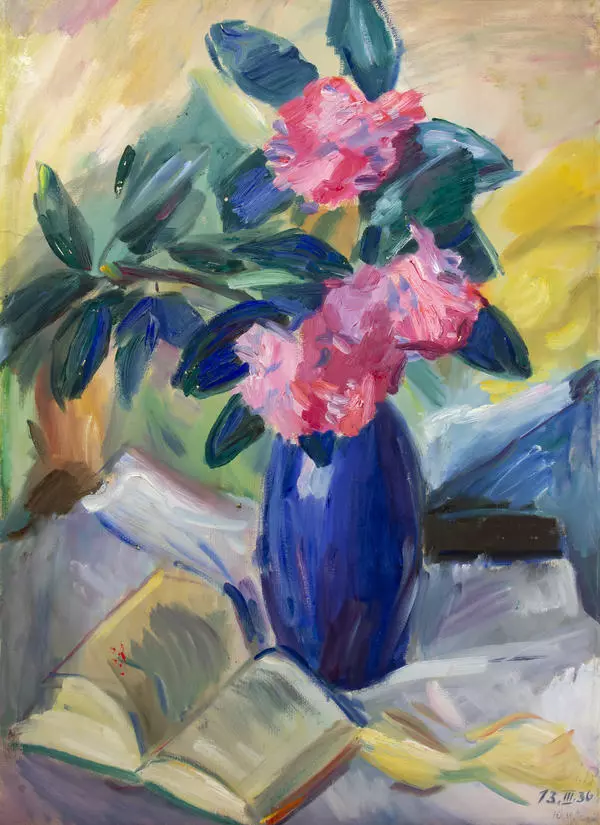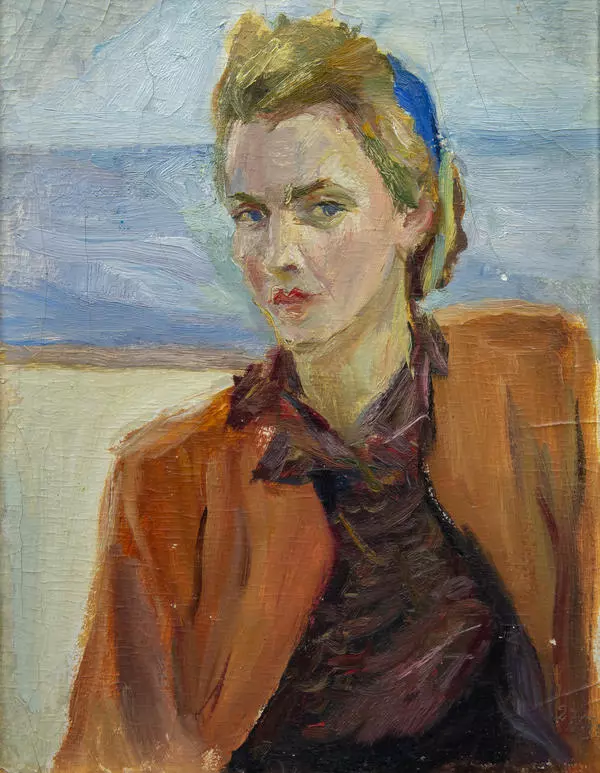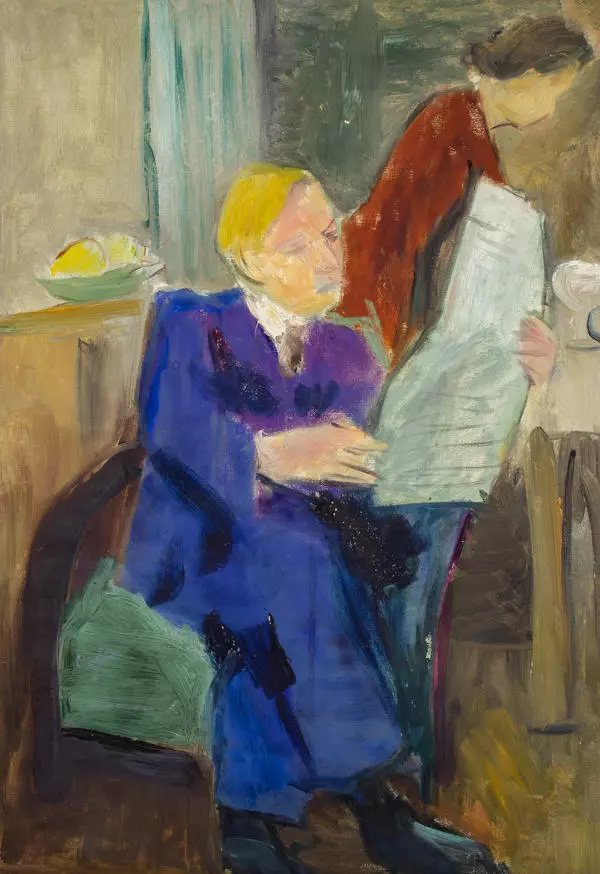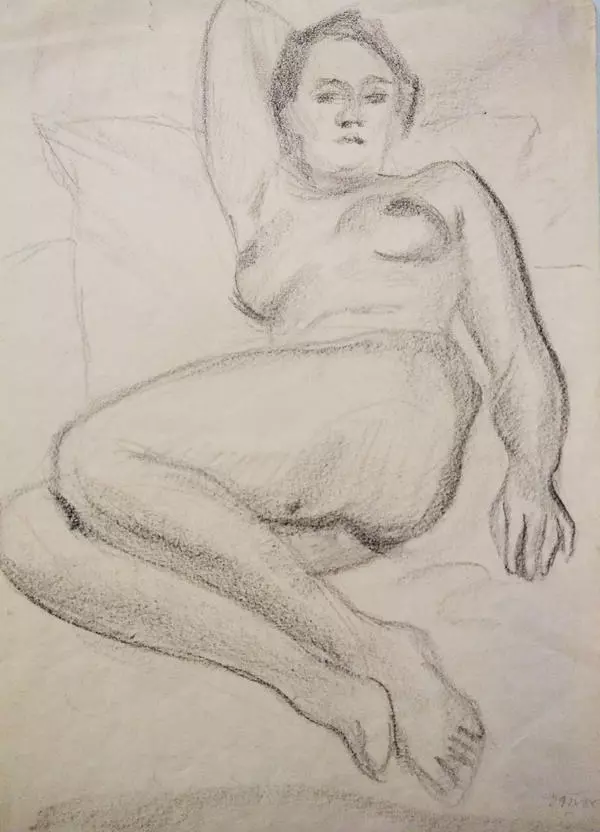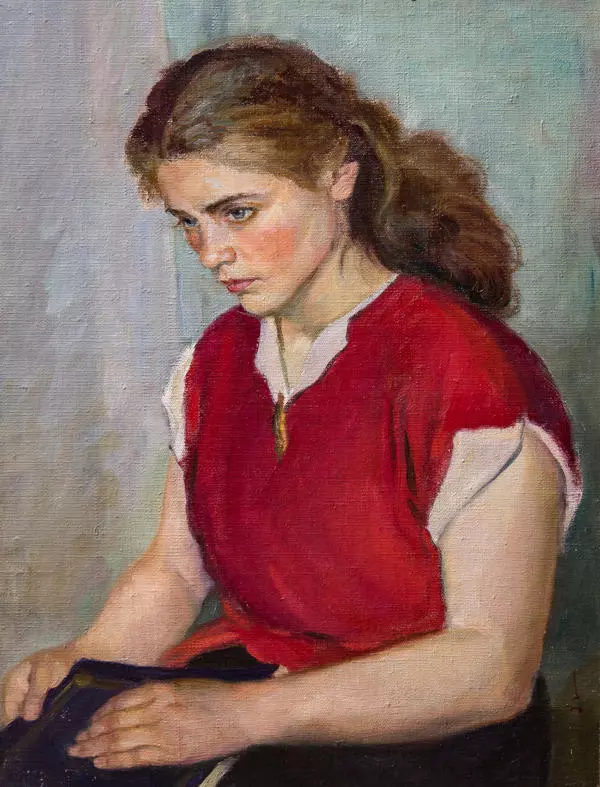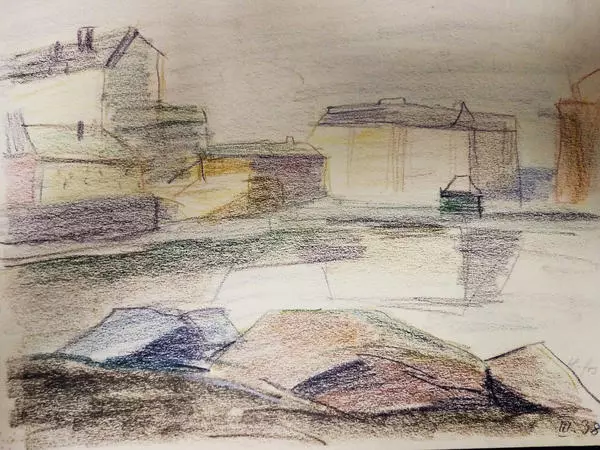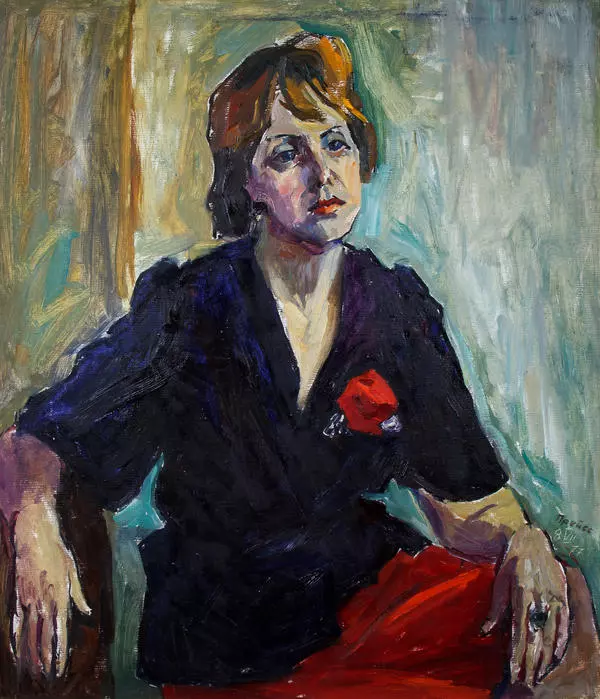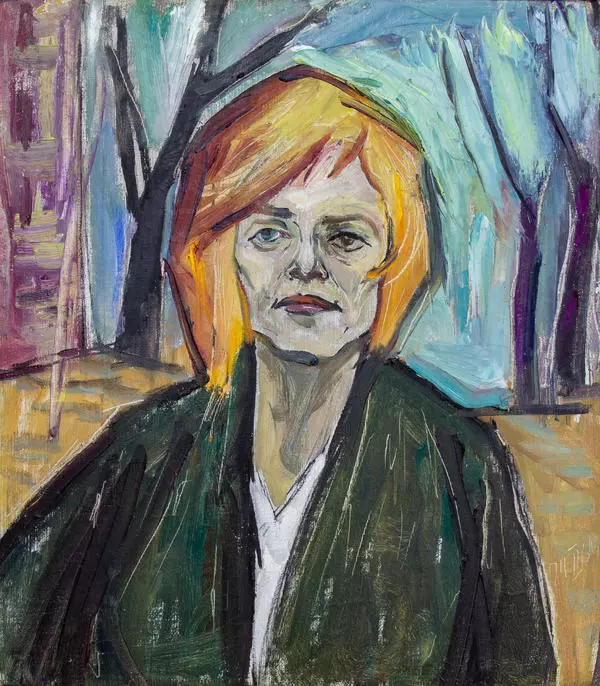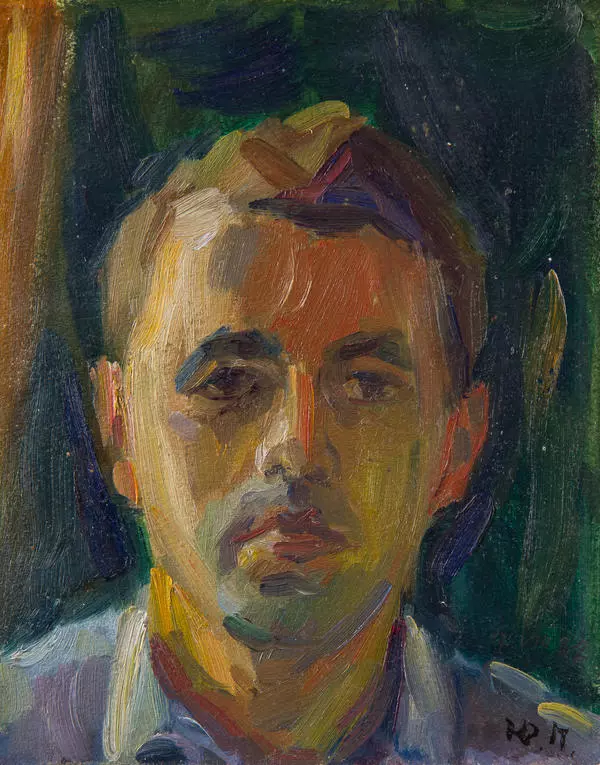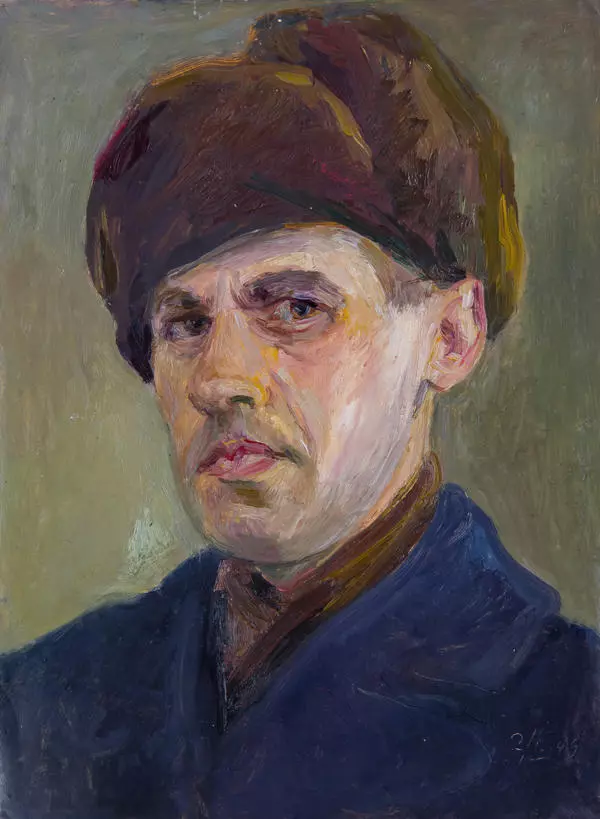Jurgis Preiss' self-portrait belongs to the late and the longest period of the artist’s work, the Kemerovo period. It lasted from 1956 till Preiss' death in 1984. At that time, Preiss returned to his usual small genres and light colors, but rethought his early works and made his paintings more autobiographical.
Self-portrait of 1968 took the center place in the work of the artist. Like other works of the Kemerovo period, it is filled with author’s associations, memories and personal impressions. The impetus for the creation of the painting was the visit to Koenigsberg, where Preiss had not been since 1933.
Hans-Jurgis Preiss is a Soviet artist of the Prussian origin. His first marriage to Gertrude Gennis, a communist and an intelligence agent, influenced the whole of the artist’s work. Preiss became a Soviet intelligence agent and, according to some art historians, created his paintings with increased attention to details and hints, trying to convey what is hidden deeper than one can see at first glance.
The artist is 64 years of age in this self-portrait. He depicted the facial features in detail: tight folds of the mouth, wrinkles, straight harsh look. Preiss painted himself with bare shoulders - in doing so he got rid of extra signs of the times. The man depicted in the painting could be born in any century and in any country. With this detail the artist tried to convey one of the main thoughts of the Self-portrait: human life is not limited to one separate period of time, it is much wider.
Jurgis Preiss added several references to work of other artists in the self-portrait. On the left side of the painting one can see a corner of a picture with blossoming branches, which resembles a work by Van Gogh. On the right side there is a fragment of Rembrandt’s painting The Return of the Prodigal Son.

